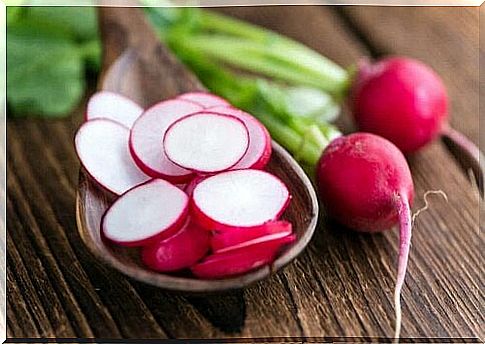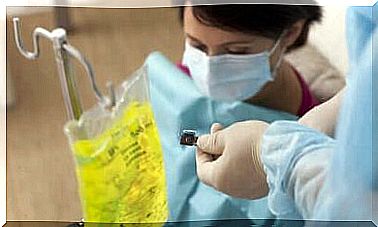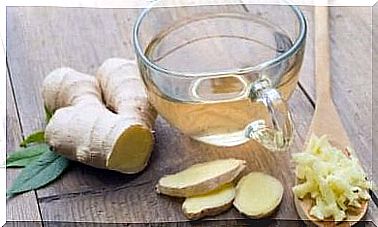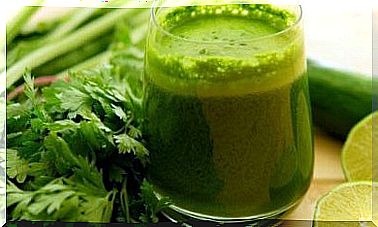Radish Leaves: Benefits And Ways To Use Them

Radish leaves are not one of the most popular foods in the kitchen. However, if you knew all of their benefits, you would definitely include them in your diet. In addition, their mild taste makes them good in any salad or dish.
When using this plant, the first thing you do is cut the leaves off. However, they contain nourishing components that can have a positive effect on your health. If you are still reluctant to try them, we will tell you what their characteristics are and how to ingest them. Maybe you change your mind!
Radish leaves, what are their benefits?
The truth is that there are not very many studies of their properties. Popular culture, however, has long used radishes as a means of treating certain mild ailments such as fever, sore throat, bile disorders and inflammation. Learn more about their benefits below.

People have been using radishes for medicinal purposes for years, but studies are currently proving some of their properties.
They help supplement the diet
Due to their low calorie content, one can include radish bales in any diet to maximize their benefits. One can actually mix them with cabbage and some other leafy vegetables in salad and enjoy them.
In comparison, a publication from the Illinois University Extension describes the nutritional components of a wide variety of vegetables. The release mentions that a dl of radishes contains about 12 calories and virtually no fat.
Radish leaves contribute to a healthy digestion
Radish leaves can help promote digestion. Although scientific evidence still lacks to prove its effects, some studies suggest that their fiber content may be responsible for their benefits.
Research published in the Food and Agricultural Organization of the United States mentions that consuming this part of the plant can improve gastrointestinal function and the burning of fat.
It can have effects on diabetes
Diabetes is a disease in which the levels of glucose in the blood increase above the normal parameters. This disorder is quite common among the world population and stems from a low production of insulin by the pancreas or tissue resistant to its action.
According to an article published in the journal Nutrients, it seems that all parts of radish have anti-diabetic properties. As for its leaves, they can reduce the uptake of glucose into the intestines. Further clinical studies of these effects are required.
How can one use radish leaves to take advantage of their benefits?
The most common way to eat radishes is by slicing them and eating them raw. However, you can use radish leaves in different dishes and cook them the way you would cook any other leafy vegetable. Some preparations with this food are the following:
- Lettuce: Just like with lettuce and spinach, you can add radish leaves to any salad.
- Soup: You can cook radish leaves in soup and combine them with the other vegetables in the dish.
- Smoothie: When making these drinks, one can add some radish leaves. They will add nutritional value without affecting the taste.
- Omelet: This dish is simple to make and has a nice taste. The preparation of it is the same as that of an omelette with eggs and spinach, except that instead of the latter ingredient one should use radish leaves.
- Sautéed: You can also sauté them in a wok with other vegetables. You only need salt and the spices you prefer.

Slices of radish are the traditional way of consuming this plant, but there are many other forms of cooking.
Contraindications and side effects
The intake of radish leaves is almost always considered safe. In large quantities, however, it can irritate the stomach. Some people may also be allergic to this food, although it is not very common.
At the same time , women who are pregnant or breastfeeding should be especially careful when consuming radishes. This is because there is not enough information about their effects during this period.
Since it helps to lower blood sugar levels, people with hypoglycaemia should refrain from a large intake. If you suffer from gallstones, you should also be careful about eating radish leaves. This is because this food increases the flow of bile and this action can cause sudden pain due to blockage of the stones.
Lastly, do not forget that in moderate amounts the use of this plant has no side effects. One can therefore include it in his diet without any problems and test its benefits. If you have any symptoms, it is best to go to the doctor.









